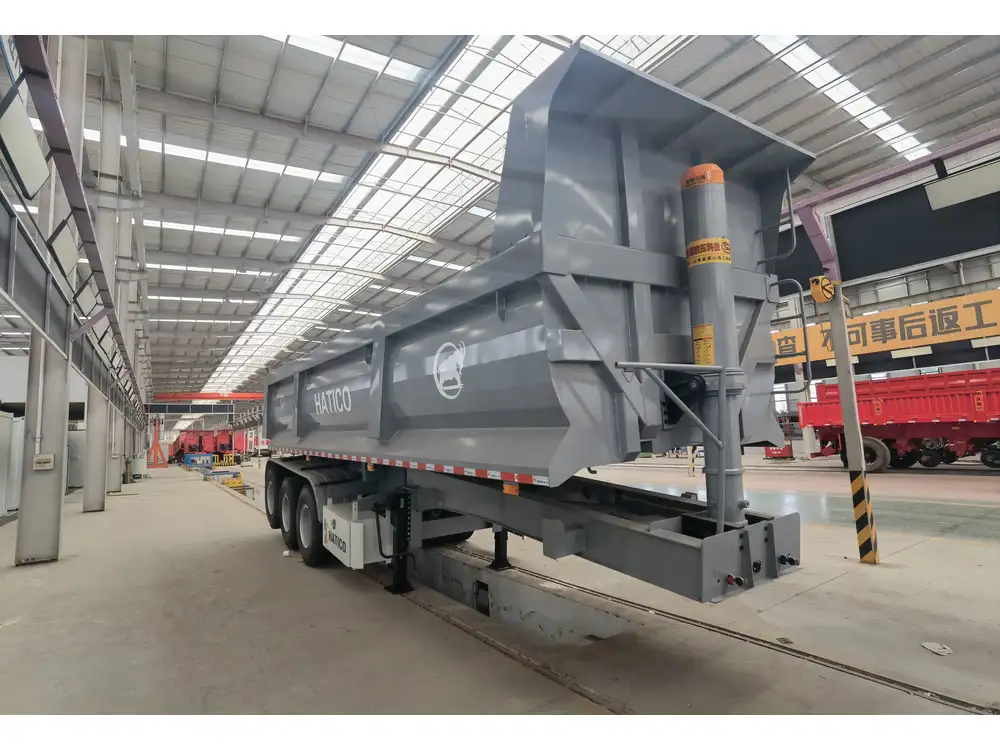Navigating the intricacies of flatbed trailer loading can be daunting for both novices and seasoned transport professionals. Whether you’re a driver, a loader, or simply someone seeking to understand the process, mastering the technique of pulling yourself onto a flatbed trailer is crucial for both safety and efficiency. This article delves into effective strategies, necessary equipment, safety considerations, and troubleshooting common issues associated with flatbed trailers.
Understanding Flatbed Trailers
Flatbed trailers are distinct vehicles designed for transporting cargo that does not require side walls or a roof. Their versatility makes them a popular choice for hauling large and heavy items. These trailers come in various configurations, including:
| Type of Flatbed Trailer | Description |
|---|---|
| Standard Flatbed | Basic design used for general freight. |
| Step Deck Trailer | Features a lower deck for taller loads. |
| Double Drop Trailer | Allows for extra height clearance. |
| Extendable Flatbed | Length can be adjusted for oversized cargo. |
Understanding these variations can aid in selecting the right trailer for your specific needs.
The Importance of Proper Loading Techniques
Effectively loading a flatbed trailer isn’t just about getting the cargo onto the trailer; it’s about ensuring safety and stability throughout transport. The dangers of improper loading can lead to lost cargo, damage, or even accidents on the road. Here’s what to consider:

Load Distribution
Distributing the weight evenly across the trailer is paramount. Improper weight distribution can cause swaying or tipping while in transit. Refer to the following guidelines for optimal weight distribution:
- 50/50 split: Aim to have 50% of the load towards the front and 50% towards the rear.
- Axle placement: Ensure heavy items are placed over the axles to reduce stress on the trailer’s structure.
Securing the Load
Once the cargo is loaded, securing it should be your utmost priority. Utilize various securing techniques, including:
- Ratchet Straps: Ensure that straps are sufficiently tight without cutting into the load.
- Chains: For heavier items, using chains is often more secure.
- Dunnage: Placing dunnage (wood blocks) between the cargo can prevent shifting.
How to Pull Yourself onto a Flatbed Trailer
When it comes to pulling oneself onto a flatbed trailer, having a systematic approach is key. Below is a step-by-step guide designed to facilitate this process.

Preparation
Assess Your Environment:
- Check for stability and ensure the ground beneath the trailer is solid.
- Be aware of weather conditions—wet surfaces can increase the risk of slipping.
Equipment Check:
- Ensure that any equipment, such as loading ramps, is in good condition.
- Inspect the trailer for sharp edges or loose straps.
The Pulling Process
Step 1: Position Yourself Correctly
Position your legs shoulder-width apart and maintain a low center of gravity. This stance enhances stability and control during the pull-up.

Step 2: Grasp the Trailer Edge
Utilize the trailer’s edge for leverage. Ensure your grip is secure—gloves can help improve grip if surfaces are slick.
Step 3: Use Your Legs, Not Your Back
Leverage the strength of your legs rather than your back to push yourself upward. Bend your knees and use explosive power to pull your body onto the trailer.
Step 4: Swing Your Body
As you start to pull yourself up, swing your legs to gain momentum. Keep your movements fluid; jerky motions can lead to loss of balance.

Step 5: Secure a Good Position on the Trailer
Once you’re on the trailer, immediately secure yourself. Sit or kneel before standing to regain your balance.
Advanced Techniques for Heavy Loads
When dealing with exceptionally heavy or bulky items, consider these additional strategies:
- Stair-step Method: Use a ladder or built-in steps if available on the trailer, which provide a safer means of ascent.
- Mechanical Aids: Utilize equipment like forklifts or cranes for large items instead of attempting to pull them up manually.
Safety Precautions
Being aware of safety practices when loading and pulling yourself onto a flatbed trailer is vital. Following are essential safety measures:
| Safety Measure | Description |
|---|---|
| Wear Appropriate Gear | Use slip-resistant footwear and gloves. |
| Inspect Equipment Regularly | Regular checks can prevent accidents caused by wear. |
| Always Have a Spotter | A spotter can warn you of obstacles when loading or unloading. |
| Use Lifting Aids | Whenever possible, use mechanical devices to assist with heavy loads. |

Troubleshooting Common Problems
Despite meticulous planning, issues can arise while loading a flatbed trailer. Here are some common obstacles and their solutions:
Slippery Surfaces:
- Solution: Use non-slip footwear and ensure the surface is dry before attempting to climb.
Unstable Loads:
- Solution: Always double-check that loads are secure before moving the vehicle.
Equipment Failure:
- Solution: Regular maintenance and inspection can reduce the risk of breakdowns.
Physical Limitations:
- Solution: Know your limits; don’t hesitate to seek assistance if a load is too heavy.
Conclusion
Mastering the skill of pulling yourself onto a flatbed trailer is an essential competency for those involved in transport and logistics. With proper techniques, safety measures, and an understanding of the intricacies involved in flatbed loading, both beginners and experienced professionals can enhance their efficiency and safety standards. By applying the methods outlined in this guide, we ensure a more streamlined process, reducing risks and improving overall productivity in trailer loading operations.
Arming yourself with knowledge and adhering strictly to safety protocols not only safeguards your own well-being but also contributes to a more efficient load management system. Whether you’re handling standard cargo or navigating the challenges of oversized loads, a systematic approach will prove invaluable. Embrace these practices, and elevate your expertise in the world of flatbed trailers.



